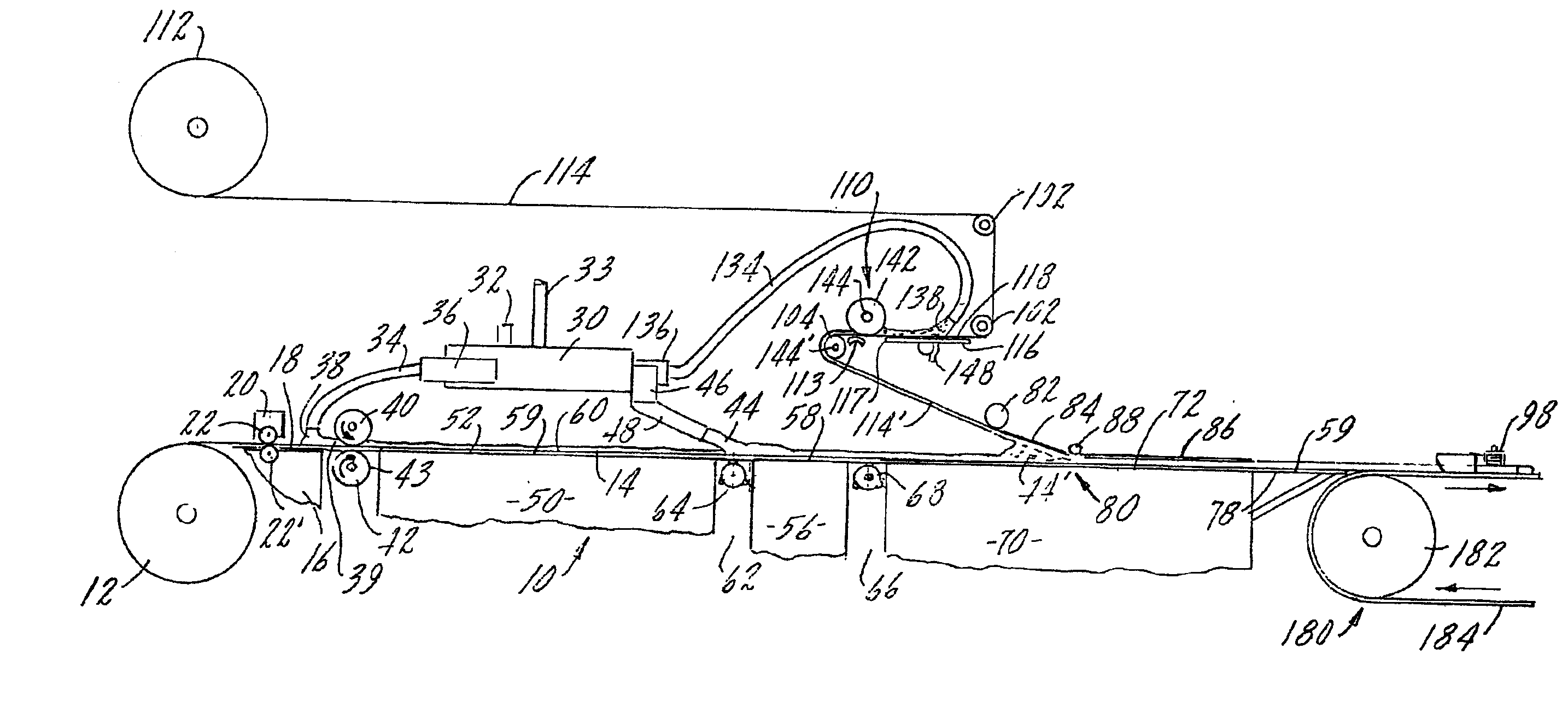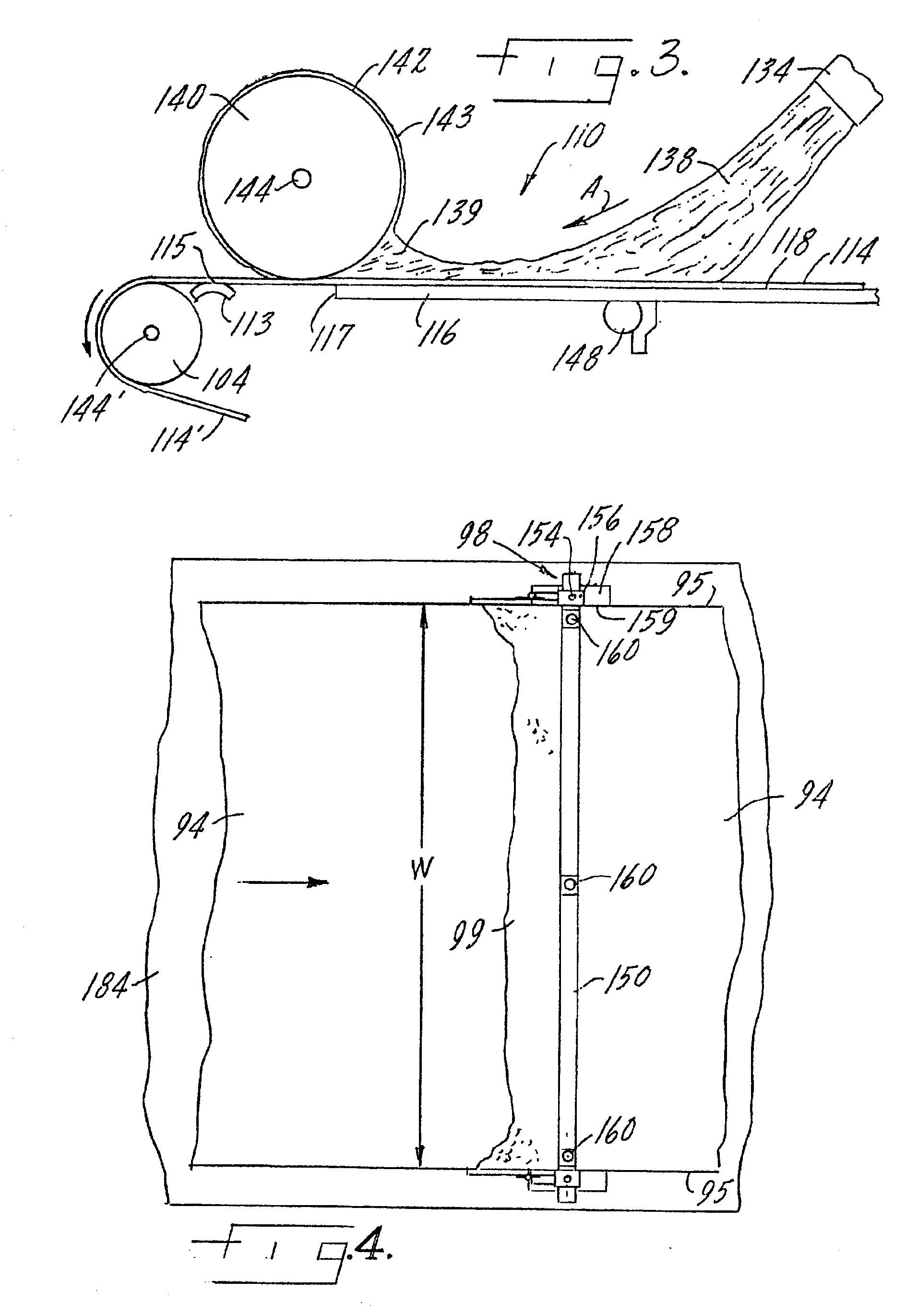Method of manufacture of glass reinforced gypsum board and apparatus therefor
a technology of glass reinforced gypsum and manufacturing method, which is applied in the direction of vehicle sealing arrangement, synthetic resin layered products, water-setting substance layered products, etc., can solve the problems of reducing the edge reducing the strength of the board, and compromising the optimization between cost and effectiveness concerns
- Summary
- Abstract
- Description
- Claims
- Application Information
AI Technical Summary
Benefits of technology
Problems solved by technology
Method used
Image
Examples
Embodiment Construction
In the diagrammatical, cross-sectional illustration of FIG. 1, the board forming station 10 of an inventive embodiment of the inventive plant is shown. Although illustrated in cross-section, the station 10 is shown diagrammatically to clearly depict the separate elements in relation to each other. Modifications to the arrangement are possible and distances between the separate elements are not to scale for simplicity of illustration, but a pragmatic and efficient arrangement will come to mind to a person having ordinary skill in the art.
The inventive plant 10 comprises a supply roll 12 that provides feed of a continuous sheet of facing material that, in the arrangement shown, defines a bottom-facing sheet 14. The supply roll 12 may feed out a sheet comprising any conventional material used in gypsum boards, for example, paper or paper board, but for purposes of the present invention, the material of bottom facing sheet 14 preferably comprises a mat of long inorganic, e.g., glass, fi...
PUM
| Property | Measurement | Unit |
|---|---|---|
| diameter | aaaaa | aaaaa |
| diameter | aaaaa | aaaaa |
| diameter | aaaaa | aaaaa |
Abstract
Description
Claims
Application Information
 Login to View More
Login to View More - R&D
- Intellectual Property
- Life Sciences
- Materials
- Tech Scout
- Unparalleled Data Quality
- Higher Quality Content
- 60% Fewer Hallucinations
Browse by: Latest US Patents, China's latest patents, Technical Efficacy Thesaurus, Application Domain, Technology Topic, Popular Technical Reports.
© 2025 PatSnap. All rights reserved.Legal|Privacy policy|Modern Slavery Act Transparency Statement|Sitemap|About US| Contact US: help@patsnap.com



